
views
Setting up the Tank

Fill a tank with at least 10 gallons (38 L) of water per gourami. Pour the water into an empty, clean aquarium or fish tank. Measure out the right amount based on the number of dwarf gouramis you have. Use natural, spring water or tap water that's been treated so there's no chlorine or chemicals in it. To treat tap water, run it through a dechlorinator.
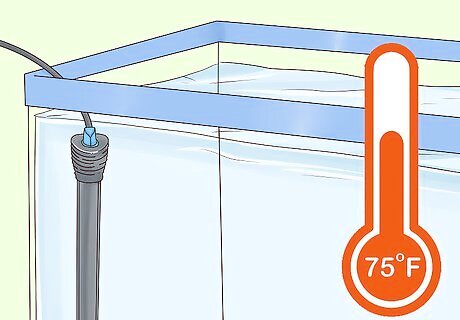
Use a heater to keep the water between 72 and 82 °F (22 and 28 °C). Place a submersible heater, which you can buy from a pet store or online retailer, inside the tank. Set it to a temperature no lower than 72 °F (22 °C) and no higher than 82 °F (28 °C) as dwarf gouramis need warm water to survive. Put an aquarium thermometer in the tank to monitor the water temperature. If the tank is sitting somewhere in the sun or in a warm room, you may not need the heater.
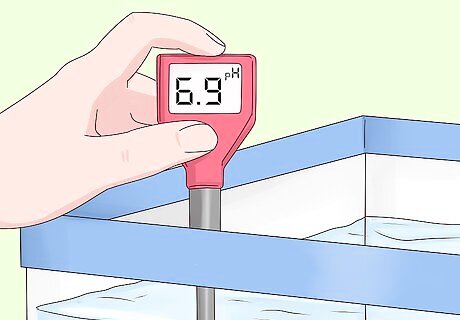
Maintain a water pH level between 6 and 8.8. Because gouramis need soft, slightly acidic water, monitor the pH level so that it doesn't go below 6 or above about 8.8. Test the pH level at least once a month using pH test strips or a digital tester to make sure it's the right acidity. If the pH is too high, you can lower it by adding natural items, like driftwood, or by installing a reverse osmosis filter. If the pH is too low, you can raise it by adding seashells or dissolving baking soda into the water.
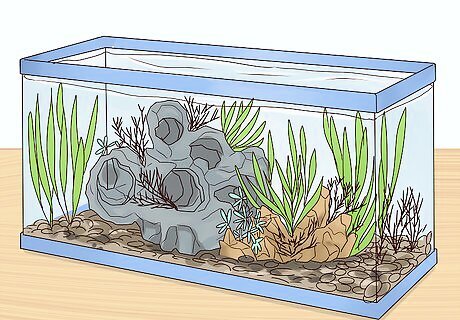
Add decorations in the tank so the gourami has places to hide. If you leave the tank too open, your gourami will become shy and skittish. Include a lot of aquatic plants and things like fake logs or large rocks for the fish to duck into or under. Choose tall plants that grow to the top of the tank, like Amazon sword plants, java ferns, or hornwort. Never use items that you find outside, like branches or rocks, because they can contain harmful bacteria.
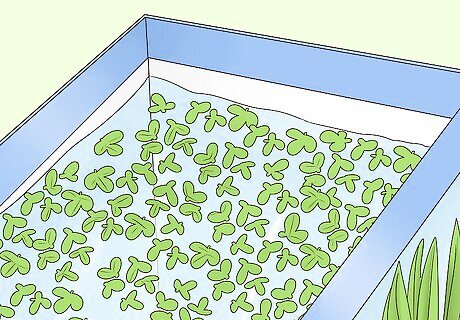
Place floating plants on top of the water to create shade in the tank. Use plants like java moss or duckweed to provide cover for your gourami, which does best in darker environments. Add as many plants that float on the surface as you'd like. Leave at least a small area of the water uncovered so the fish can surface occasionally.
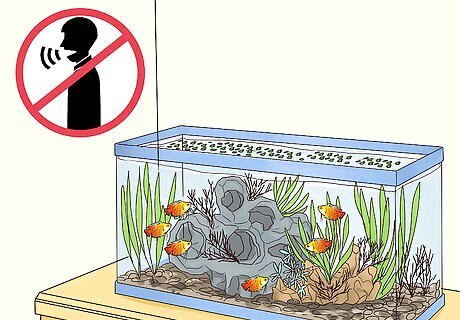
Keep the tank in a quiet area since gouramis are sensitive to noise. Set the aquarium in a spot that's out of the way where your fish won't hear any loud or startling sounds. Good options include a bedroom, basement, or living space that isn't used often. If your fish is exposed to noises like shouting, alarms, or tapping, it can get scared and try to “escape.” This is dangerous because the fish will likely hit the wall of the tank and could injure itself.
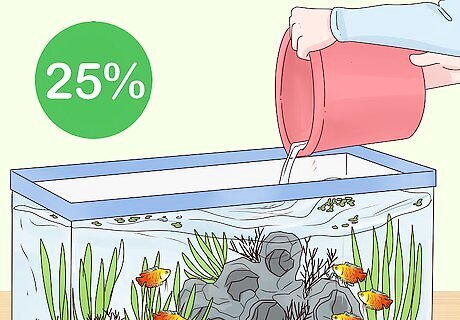
Change out about 25% of the water in the tank once every 2 weeks. To keep the water fresh, replace about 1/4 of it on a bi-weekly basis. Scoop it out with a cup or bucket, then pour clean water in. Be careful not to scoop up the gourami while you're replacing the water. Don't use soap when you're cleaning the tank or you could poison the fish.
Feeding and Protecting Your Fish
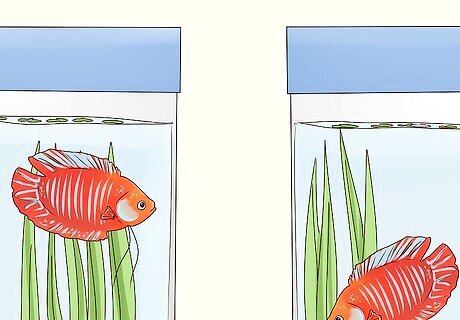
Keep male gouramis separate from each other. Because male gouramis can be very territorial, do not put 2 together in the same tank. However, you can put 2 females in 1 tank as they are much more peaceful. To determine if your gourami is a male, look at the coloring of its body. Males are orange-red with greenish blue bands, while females are dark blue with yellow stripes.
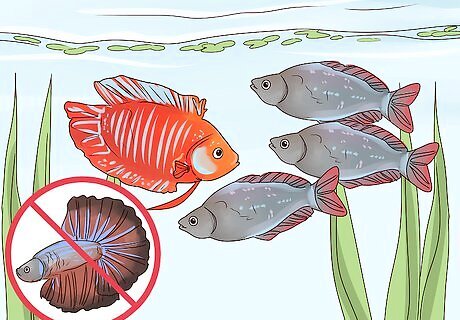
Choose other tank mates carefully to keep your fish safe. If you plan on pairing your gourami with other fish, avoid aggressive species like betta fish or guppies. Opt for fish that are known to be calm and friendly, like tetras, catfish, or rainbow fish. If you aren't sure if a certain species will get along with your gourami, call your local pet shop to talk to an expert. Monitor your fish's behavior when you first introduce a new tank mate. If you notice they're acting withdrawn or if they appear stressed and skittish, remove the other fish.

Feed the gourami tropical flake food 1 to 2 times per day. Choose a high quality flake food that lists fresh seafood as the primary ingredient instead of fish meal. Give your gourami a pinch each time you feed it, up to 2 times a day. You can also use vegetable pellets or pellet fish food instead of flake food. If you notice your fish hasn't eaten all of the food from the day's first feeding, don't feed it a second time. Only feed it 2 times a day if it eats all of its food.
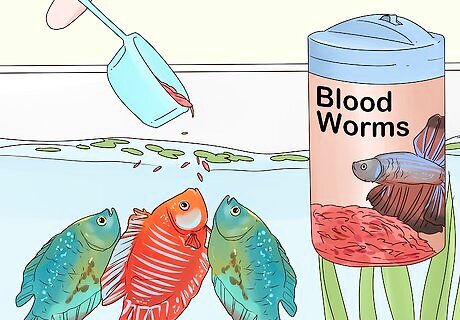
Supplement the gourami's diet with live food 2 to 3 times a week. To give your fish a boost of nutrition, feed it live food, like brine shrimp, bloodworms, or live worms, along with its flake food. This will also keep its color more vibrant and shiny. Give the gourami about 1 teaspoon (6 g) of the live food up to 3 times a week. Make sure you cut up the food into the smallest pieces possible so it's easy for the fish to digest them.
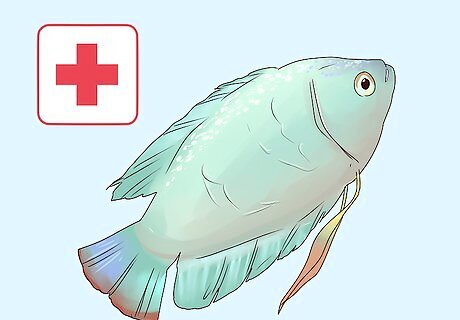
Take your fish to the vet if you notice any concerning symptoms. Keep an eye on your fish so that you'll be able to spot any problems as soon as they occur. Look for things like spots on its body, a loss of color, fraying fins, or skittish swimming. If you see any of these symptoms, take your dwarf gourami to the vet. Call your vet even if you aren't sure if a symptom is something to be concerned about. It's better to be safe than sorry!












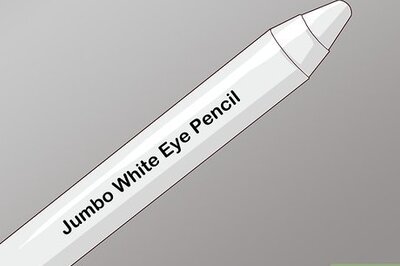




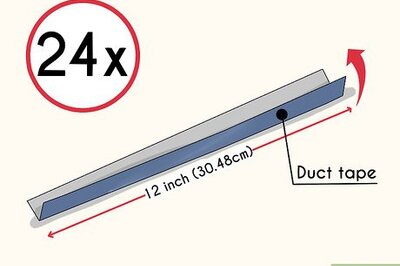


Comments
0 comment